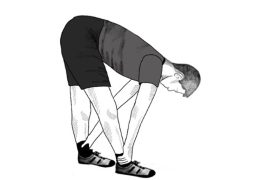A study published in Diabetes Care revealed that individuals with obesity who engaged in the majority of their moderate-to-vigorous physical activity in the evening experienced better health outcomes compared to those exercising at other times of the day. Conducted in Australia, the study found that aerobic physical activity performed predominantly in the evening, from 6 p.m. to midnight, was associated with the greatest reductions in death and heart disease risk. However, the study’s coauthor, Angelo Sabag, emphasized that the overarching message remains clear: physical activity at any time is linked to decreased cardiovascular disease and mortality risk in adults with obesity. These findings underscore the vital role of regular physical activity in promoting heart health and longevity.
8-Year Study Tracks Morning, Afternoon, and Evening Exercisers:
The study, conducted over 8 years, aimed to investigate the association between the timing of exercise and the risk of heart disease and mortality in adults with obesity. Nearly 30,000 participants aged 40 and older from the UK Biobank data were included, with an average age of 62. Approximately 10% of the participants had type 2 diabetes, and individuals with preexisting heart disease or cancer were excluded from the study.
Participants wore accelerometers 24 hours a day for a week to measure their physical activity, including both structured exercise and daily activities like household chores. Based on when they predominantly engaged in moderate to vigorous physical activity, participants were categorized into morning, afternoon, or evening exercisers.
The researchers then tracked participants’ health outcomes, including deaths, cardiovascular events, and microvascular dysfunction events, over the follow-up period using data from the National Health Services and National Records of Scotland. To isolate the impact of exercise timing, the study controlled for various factors such as demographics, smoking, alcohol consumption, diet, and sleep. This rigorous approach aimed to discern whether the timing of physical activity had a significant influence on health outcomes independently of other variables.
Evening Exercise Linked to Lower Risk of Death:
The findings of a recent study suggest that the timing of physical activity, particularly aerobic exercise, may play a crucial role in reducing the risk of premature death and death from heart disease. According to the research:
- Participants who engaged in the majority of their aerobic physical activity between 6 p.m. and midnight had the lowest risk of premature death and death from heart disease.
- More activity in the evening was associated with a 61 percent lower risk of dying from any cause, while afternoon activity was associated with a 40 percent lower risk, and morning activity was associated with a 33 percent lower risk.
- Similarly, more activity in the evening was linked with a 36 percent lower risk of dying from heart disease, compared to a 16 percent lower risk with afternoon activity and a 17 percent lower risk with morning activity.
- Evening exercise was also found to be associated with a lower risk of neuropathy, nephropathy, or retinopathy, with risks decreasing by 24 percent for evening activity, 16 percent for afternoon activity, and 21 percent for morning activity.
- Importantly, the frequency of evening physical activity appeared to be more important than the total amount of daily physical activity in reducing these risks.
While further research is needed to establish a causal relationship between the timing of activity and decreased risks, these findings suggest that timing could be a crucial consideration in obesity and type 2 diabetes management, as well as preventive healthcare recommendations. This underscores the potential importance of incorporating evening exercise into daily routines for improved health outcomes.
Late-Day Exercise May Offset Reduced Insulin Sensitivity:
The concept that exercising later in the day may compensate for decreased insulin sensitivity aligns with previous research indicating a circadian rhythm to insulin sensitivity. It’s been suggested that decreased insulin sensitivity during evening hours may have evolved as a protective mechanism against nocturnal hypoglycemia, particularly when food intake is typically reduced during the night.
For individuals, especially those with obesity who may have impaired insulin production or sensitivity, engaging in physical activity later in the day could potentially counteract some of the evening-related insulin resistance. This may help mitigate fluctuations in blood sugar levels and contribute to better glycemic control.
Exercise can lower blood sugar levels:
- Increased insulin sensitivity: Physical activity enhances the ability of muscle cells to utilize insulin effectively, allowing for better uptake of glucose from the bloodstream during and after exercise.
- Insulin-independent glucose uptake: Muscle contraction during exercise facilitates the uptake of glucose by cells, even in the absence of insulin, thereby promoting glucose utilization for energy production.
While these mechanisms provide valuable insights into how exercise impacts blood sugar regulation, further research is necessary to fully elucidate the underlying processes involved. Continued investigation into the relationship between timing of physical activity, insulin sensitivity, and glycemic control will be essential for optimizing strategies for diabetes management and overall metabolic health.
Could Nighttime Habits Impact Exercise Benefits?
The benefits observed in evening exercisers could indeed be influenced by factors related to nighttime habits, such as late-night eating and snacking. Research suggests that late-night eating often involves highly processed foods, which may contribute to negative health outcomes. Consequently, the risk reduction seen in evening exercisers could partly stem from their avoidance of unhealthy eating habits during the night.
However, controlling for dietary factors in studies can be challenging. While researchers attempted to address this issue by relying on self-reported food recall and diaries to assess participants’ diets, it’s acknowledged that such methods have limitations. Despite controlling for variables like fruit and vegetable consumption and diet quality index, there may still be other dietary factors that were not fully accounted for in the analysis. Nonetheless, the consistent results observed even after controlling for these factors suggest that evening exercise may independently contribute to health benefits beyond dietary influences.
Is Evening Exercise Right for You?
While the study suggests a potential association between exercising in the evening and improved health outcomes, it’s crucial to understand that correlation does not imply causation. Dr. Kampert emphasizes the importance of prioritizing adherence to recommended exercise guidelines over worrying about the optimal time of day for physical activity.
Current physical activity guidelines recommend at least 150 minutes of moderate-intensity exercise per week, along with incorporating two days of muscle-strengthening activities. However, despite the well-established benefits of exercise, a significant portion of the population falls short of meeting these recommendations.
The study underscores the importance of physical activity regardless of the time of day. Rather than fixating on the timing, health professionals should encourage individuals to incorporate physical activity into their routines consistently and sustainably to achieve the greatest health benefits.
For individuals with flexible schedules or specific metabolic complications such as obesity, metabolic syndrome, or diabetes, scheduling physical activity in the evening may offer additional benefits. It could potentially help regulate glucose levels and reduce the risk of cardiovascular disease and premature mortality. However, individual preferences, lifestyle factors, and overall feasibility should be considered when determining the best time for exercise. Ultimately, the key is to engage in regular physical activity that aligns with personal preferences and goals to promote long-term health and well-being.
Nighttime Workouts and Sleep:
The relationship between exercising in the evening and its potential impact on sleep remains a topic of ongoing research and discussion. While some reports suggest that high-intensity exercise may interfere with sleep duration and quality, the overall consensus is still evolving.
Traditionally, it was recommended to avoid exercising for several hours before bedtime to prevent potential disruptions to sleep. However, recent research challenges this notion, indicating that evening physical activity may not necessarily interfere with sleep.
A meta-analysis of 23 studies found no evidence to suggest that exercising later in the day causes sleep problems. However, it’s worth noting that vigorous exercise should be avoided within at least one hour before bedtime to minimize any potential disruptions to sleep patterns.
Overall, while the relationship between evening exercise and sleep remains complex and multifaceted, current evidence suggests that moderate-intensity physical activity in the evening is unlikely to significantly impact sleep quality for most individuals. As always, individual preferences, sleep patterns, and responses to exercise may vary, so it’s essential to monitor how evening exercise affects your own sleep and adjust your routine accordingly.
Disclaimer:
The information contained in this article is for educational and informational purposes only and is not intended as a health advice. We would ask you to consult a qualified professional or medical expert to gain additional knowledge before you choose to consume any product or perform any exercise.








